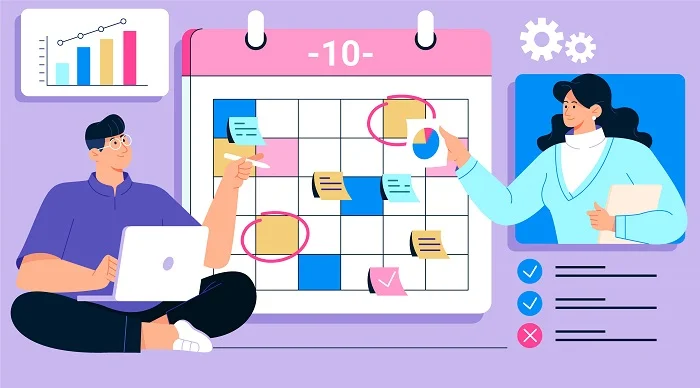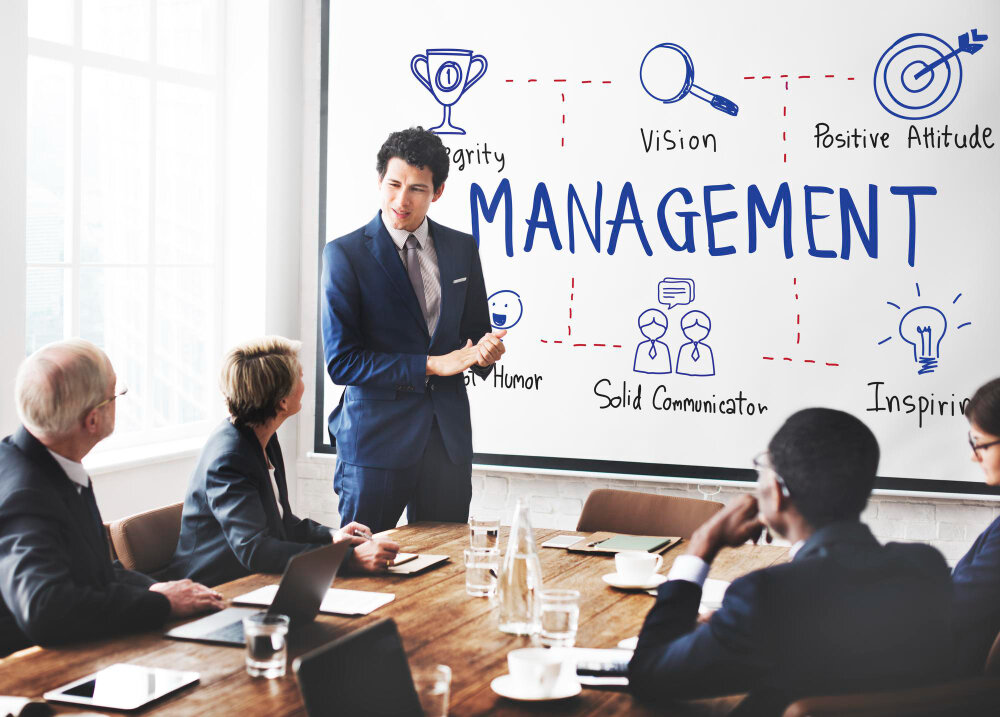Imagine a workplace where every employee feels motivated, engaged, and consistently achieving their best. It’s not merely about having the right tools or strategies; it’s fundamentally about leadership. Leadership shapes how engaged and motivated employees are.
A study by Gallup found that managers influence employee engagement scores, accounting for at least 70% of the variance. This statistic reveals how important leadership is in setting what is expected and actively working to create an environment that raises employee engagement while ensuring effective performance management.
As we explore the dynamics of leadership in continuous performance management, it is evident that leaders are architects of team success. Through their actions and strategies, they shape pathways to innovation and commitment.
Understanding Employee Engagement
Employee engagement measures the extent of an employee’s emotional investment and interest an employee has in their work and employer. It is one of the important metrics that will directly influence productivity and company retention rates.
Engaged employees are driven by a connection to their company’s mission and work for organizational goals rather than personal rewards.
Key Factors Influencing Engagement
The key factors that affect employee engagement and, in the process, help develop the atmosphere of the workplace include:
1. Communication
Transparent communication and clear expectations build trust and make employees feel valued.
2. Recognition
Regular appreciation and reward for employee’s work and performance infuses motivation and morale. In fact, one study reported that 79% of employees who resign from their jobs voluntarily cite a lack of appreciation as a major reason. Thus, it is important to ensure appropriate recognition to enhance retention and engagement.
3. Growth Opportunities
Professional development and career advancement are extremely critical in ensuring employee engagement. Employees need to see a path to growth within the organization to invest fully in their roles.
According to LinkedIn’s Workforce Learning Report, 94% of employees would be more inclined to remain in the company if it invested in their career development.
4. Work-Life Balance
Keeping a good work-life balance in employees ensures sustained engagement. Flexible working hours and remote working help reduce burnout and increase job satisfaction by promoting the culture of respecting individual space.
5. Wellness Programs
Conducting wellness programs that focus mainly on physical and mental health can greatly affect employee engagement. Offering employees health screenings, stress management workshops, and fitness activities demonstrates that a company truly cares for them, therefore increasing morale and productivity.
6. Support from Leadership
Employee engagement hinges on supportive leadership. An approachable leader with mentorship and listening traits creates an engaging work environment. Employees feel more secure and valued when they know their leaders support their growth and success.
Also Read: The 4 Stages of Performance Management Cycle
Leadership’s Impact on Employee Engagement
One of the central elements promoting high employee engagement in the work environment is effective leadership. This section considers two components of leadership support: trust and transparency, vision and alignment, and how leadership cultivates an energized and aligned workforce.
1. Trust and Transparency
Transparency in leadership fosters trust, a key factor in employee engagement. When leadership is transparent, it addresses the company’s direction, decision-making processes, and the challenges faced. People feel more secure in a team where decision-making is open and clear.
Employees in high-trust companies experience 74% less stress, are 50% more productive, and are 76% more engaged compared to those in low-trust companies. This transparency cultivates a culture of honesty, where leaders make employees feel secure and involved. Thus, it nurtures a supportive environment where open feedback and collaboration can thrive.
2. Vision and Alignment
Another important way by which leadership plays a critical role in employee engagement is by setting the vision and goal of the team in line with organizational objectives. A well-articulated vision provides a sense of purpose and direction, which is very important for engagement and motivation towards the workforce.
Goals must align with organizational objectives, reflecting on each contributor and linking their success to that of the company. According to Gallup, employees who are clear about what makes their organization different from competitors are 3.7 times more likely to be fully engaged. This helps create a vision and goal alignment that shows employees how their efforts lead to the big picture, boosting commitment and drive.
Continuous Performance Management
Continuous Performance Management involves regular interactions to improve performance and align goals with organizational objectives. Unlike the traditional single annual performance appraisal process, Continuous Performance Management provides constant feedback and sets goals at regular intervals. This ensures that employees stay motivated and proactive throughout the year.
The important elements of the continuous performance management process are:
- Continuous Feedback: The feedback should be regular so that employees are always aware of their performance, which helps to make changes for real-time adjustment.
- Dynamic Goal Setting: Goals are set in such a way that they can respond to the demands of changes in projects and organizational changes while keeping employees up-to-date and motivated.
- Continuous Development Plans: Development plans run parallel with individual career aspirations and organizational needs, structuring personal and professional growth.
Also Read: Top 10 Performance Management Software In 2024
Benefits of continuous performance management
The benefits of continuous performance management are enormous and multi-fold:
- Real-Time Feedback: Giving immediate feedback has proven to be a tool for markedly increasing employee engagement and performance. According to a Gallup study, employees are 3.6 times more likely to agree that they feel motivated to excel in their tasks when they receive daily encouragement and feedback from their manager.
- Ongoing Development: Personal and professional development occurs in a continuous cycle in which employees develop themselves to change job roles. All of these are very important in fast-changing work environments.
- Increased Motivation and Productivity: Regular check-ins with clear and consistent communication concerning expectations and achievements lead to employee appreciation and understanding. This, in turn, boosts their motivation and productivity.
The Role of Leadership in Continuous Performance Management
Leaders shape workplace culture by integrating feedback into daily work and setting an example for others. Here is how leaders can create a culture of feedback:
- Leading from the Front: Engage in the act of both giving and receiving feedback transparently and respectfully.
- Encouraging Open Communication: Establish an environment where employees feel comfortable expressing their concerns or giving ideas without fear of retribution.
- Regular Feedback Mechanisms: Establish structured feedback sessions, such as weekly one-on-ones and real-time feedback tools, to make feedback part of the organizational routine.
A study has shown that 83% of employees appreciate feedback, whether it is good or bad, as long as it is constructive. This shows that a culture of rich feedback can be crucial for boosting employee engagement and productivity.
Providing Necessary Tools and Training
Equipping managers with proper tools and training is one of the basics required to adopt continuous performance management successfully. Leaders need to ensure that the following is available for the managers:
- Training Programs: Conduct training sessions and workshops to train on effective feedback techniques, how to set goals, and monitor performance.
- Performance Management Tools: Implementation of modern performance management software, whereby continuous feedback can be shared, and performance can be monitored.
For instance, Adobe and many other companies have reported great improvements in productivity from their employees after changing processes to a continuous performance management system.
On the flip side, Adobe’s “Check-in” approach focuses on clearly setting expectations, providing regular feedback, and having constant conversations about development. All this has resulted in decreased voluntary attrition by 30%. This is an example that simply underscores providing managers with all the support that helps build a culture of continuous improvement.
Also Read: How HR Helps Performance Review Calibration and Standardization
Best Practices for Leaders
Effective leadership is critical for enhancing a climate of increasing employee engagement and managing their performance. Here are some best practices for a leader who wants to leverage his team to the maximum:
1. Regular Check-Ins
Regular check-ins ensure continuous support and open communication, align goals and provide real-time feedback. The purpose of these check-ins includes the following:
- Goal Alignment: Making sure that individual goals align with team and organizational objectives.
- Immediate Feedback and Coaching: The frequent meetings permit real-time feedback and customized coaching in order to overcome problems as they occur.
- Engagement of Employees: Helping employees feel that their leadership cares about them and their personal development.
2. Recognition and Rewards
Acknowledgment and rewarding employees for their work and the success achieved are crucial for increasing motivation and morale. Good practices in the recognition process include:
- Timely Recognition: Promptly recognize achievements to reinforce desired behaviors.
- Customized Rewards: Make rewards customized to personal preferences to make them most effective.
- Public Recognition: Public recognition will serve as a force multiplier, increasing the rewarded person’s sense of accomplishment and similarly inspiring others.
Case Studies and Examples
Effective leadership and performance management practices are key drivers of success in today’s business world. Here are examples of companies that excel in these areas:
- Google: Known for its innovative approach to performance management, Google uses data-driven HR processes to ensure continuous development. Their approach includes regular feedback, peer reviews, and open communication forums, fostering a high level of employee engagement and operational excellence. This has led to higher satisfaction and retention rates.
- Deloitte: Deloitte revamped its performance management system to focus more on frequent, informal check-ins. The new system, which emphasizes real-time feedback, has improved performance and increased engagement across the firm. As a result, Deloitte reports an increase in employee satisfaction with the performance process.
Also Read: The Complete Guide to the Employee Performance Review
Conclusion
Throughout this discussion, we have discussed the fact that leadership is crucial in fostering employee engagement and making continuous performance management work.
From setting up a culture of trust and transparency to recognition, leadership plays an important part in creating the right environment at the workplace. Companies like Google and Deloitte very clearly gave us a great example of what innovative practices on leadership can do with regard to performance outcomes.
Now, it’s your turn to elevate your leadership strategy. Evaluate and refine your approaches with Engagedly, where tools and insights are designed to boost leadership effectiveness and organizational success. Book a demo today and drive real change in your team’s engagement and performance.
Frequently Asked Questions
1. How does transparency in leadership affect employee trust?
Transparency in leadership will improve the level of trust amongst employees since they know about the aims, goals, decisions, and challenges the company is undergoing. It will be easier to promote a more inclusive and secure workplace culture.
2. What is the role of regular feedback in performance management?
Regular feedback helps the employees stay current in their work, fine-tune their efforts, and feel supported in their developmental process.
3. How often should a leader have one-on-ones with team members?
At a minimum, holding one-on-one meetings every month ensures regular check-ins on progress, addresses any concerns, and maintains open communication with all team members.








































 Performance evaluation is the practice of analyzing an employee’s performance over a period. In the workplace, it is typically manifested as an annual or quarterly procedure that entails reviewing each
Performance evaluation is the practice of analyzing an employee’s performance over a period. In the workplace, it is typically manifested as an annual or quarterly procedure that entails reviewing each 
 The
The




